ASUSTOR AS5102T 2-Bay Enthusiast NAS Review
Bohs Hansen / 10 years ago
Setup – More ADM Features & ADM 2.4 update
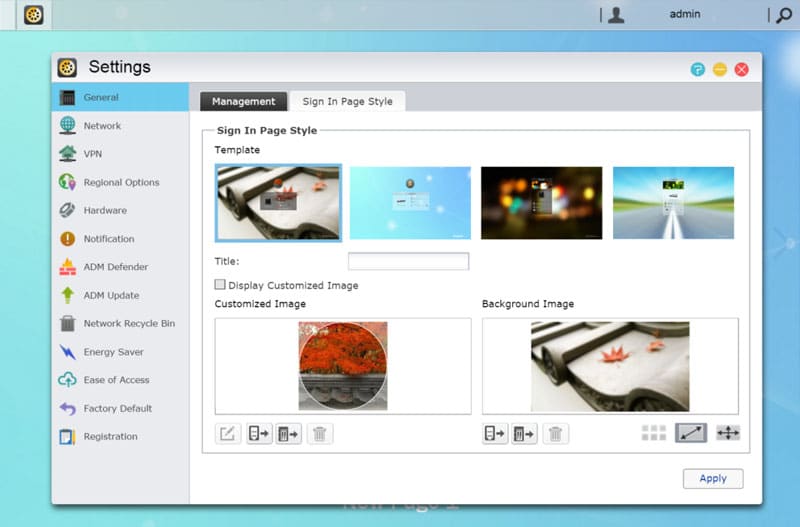
ADM is so packed with features and function, I’d like to show some more of it. You can for example design your own sign-in page style. There are templates to choose from just as you can upload and use images from both your system and NAS directly. The ADM system is also multi-language in case you would like it on a different language than English, just as you can define what code page to be used.
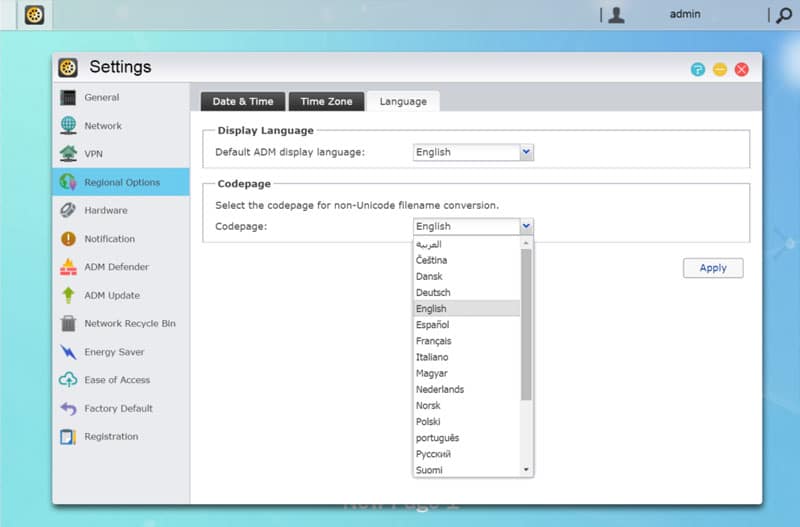
I’ve previously mentioned the LED settings, but I thought I’d also show them. You can set the brightness to fit the location and also turn off individual LEDs that you might not need or want to be lit up. You can also define when the built-in buzzer should sound and not and whether the reset button should be disabled or not. Use the last one with care as you could lock yourself out of the system.
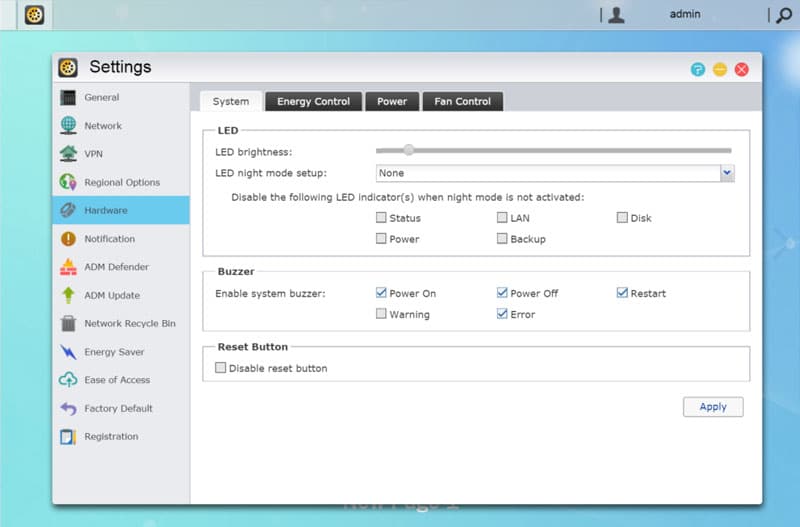
The ADM defender is a combination of a firewall and the Network Defender that hosts your black and white lists, as well as trusted IP ranges. You should add your static system to the trusted list as it will prevent you from locking yourself out with mistyped passwords.
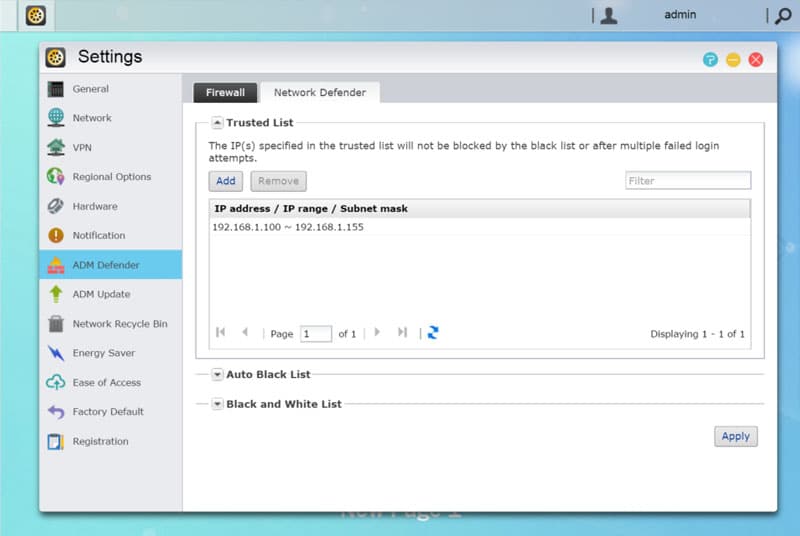
Tha backup system is very comprehensive and features Rsync, FTP, and Cloud backup. You’ll also find the settings for the one-touch USB backup button on the front of the device here. Definitely a page that you should check out.
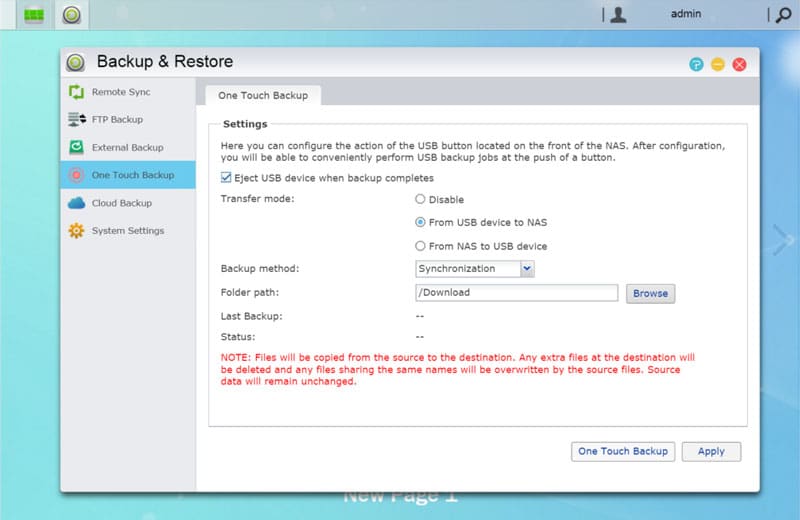
Within the System Information you’ll also find the Dr.ASUSTOR. This nifty little tool will check up on your system and let you know if anything is wrong or if there’s something to pay attention to. You can also export the health report in order to submit it when having trouble of one sort of another.
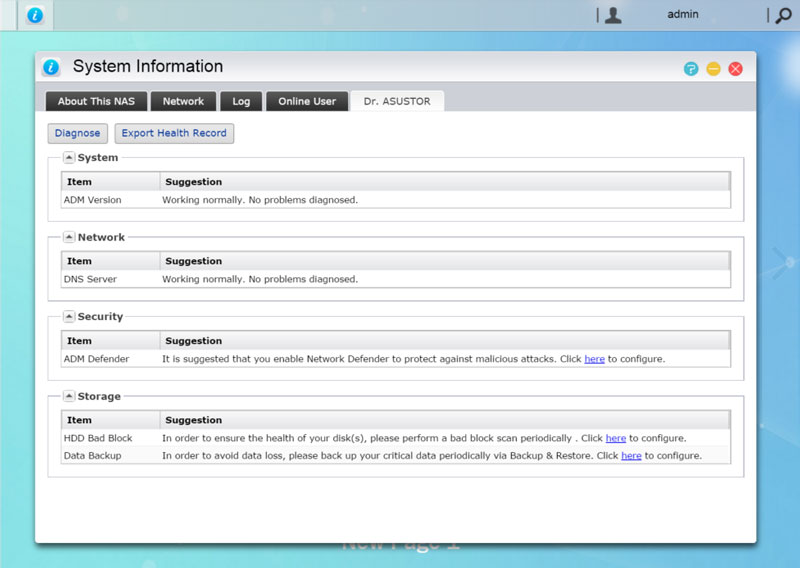
The activity monitor has all the information you’ll want too, but on separate pages. You can check up on the CPU and memory usage, Network bandwidth or disk usage, just as you can view a list of what processes are running.
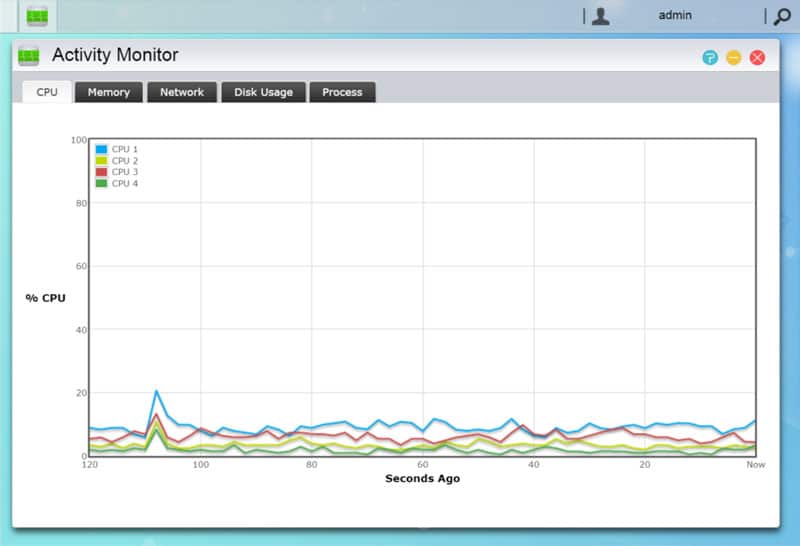
The download center is very straight forward, just like all the other parts of the NAS. But it’s most likely one of the features that home users will use most besides the Portal. There is no need to have your system running for your downloads just so you can copy them all to the NAS when finished. Let the NAS download it instead and you already have it right there on the system, ready to watch on your TV.
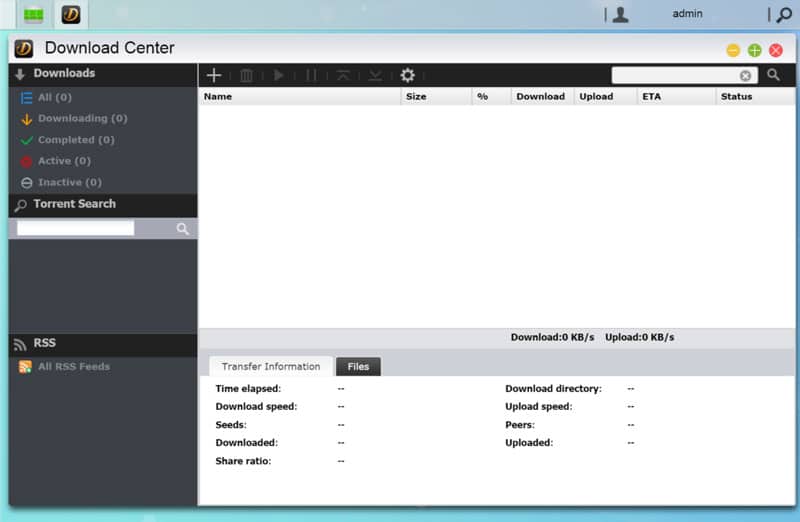
Having a built-in file explorer makes things a lot easier, but most of all faster. Windows is probably the slowest system to copy files and the transfers are further slowed down by the tunnel through your system. Copy or moving files directly on the NAS is far more productive and effective.
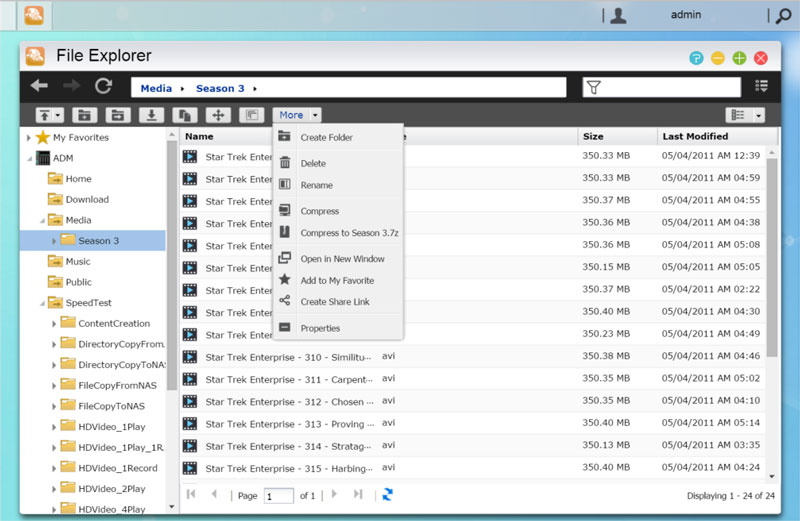
Now we’re getting to one of the really cool features, the ASUSTOR Portal. The Portal is the interface displayed when using the HDMI interface for direct output. You can define what information it will display and what default App to run on startup. Further settings include the resolution and frequency, wallpaper to use and overscan settings. It even has a screensaver to protect the connected monitor.
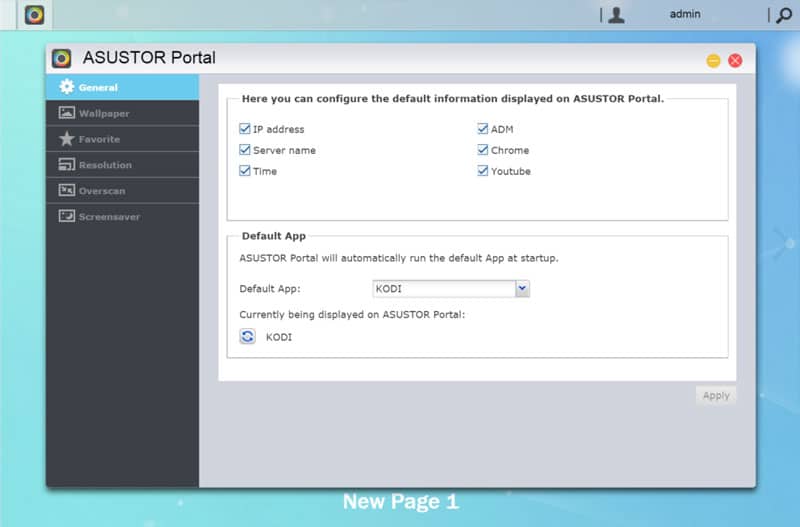
KODI is the new version of XMBC, and it’s better than ever. You can’t access its settings from the ADM, but they are the same place as most of our readers are used to from their own XMBC setup. A familiar interface with a new name. The UPnP Media server is perfect to stream your content to capable devices such as AirPlay or DLNA device.
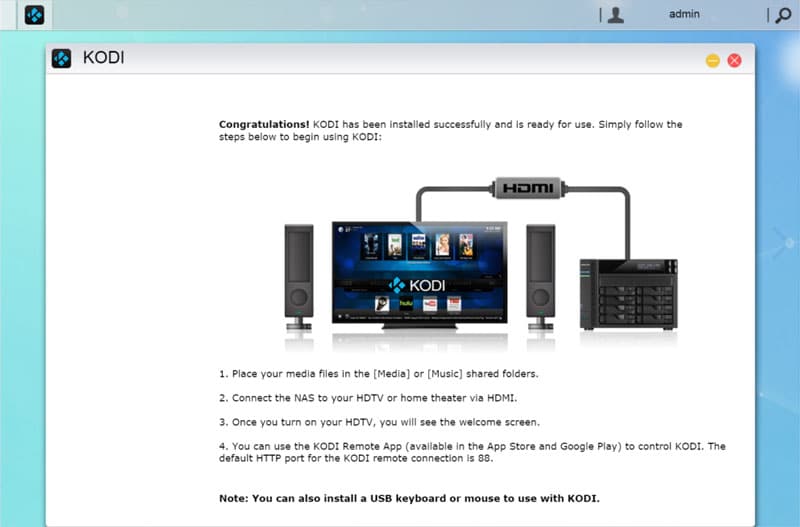
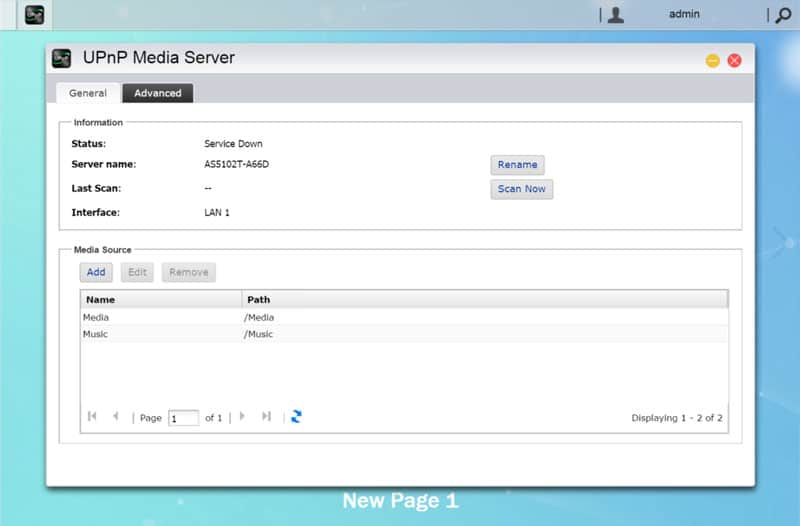
The last part of the ADN OS that I’m going to show you today, is the Surveillance Center. There isn’t that much to show you without a camera to attach and connect, but you still get a feel for the web interface and the possibilities. You can watch the streams live, playback recorded videos, and watch the logs.
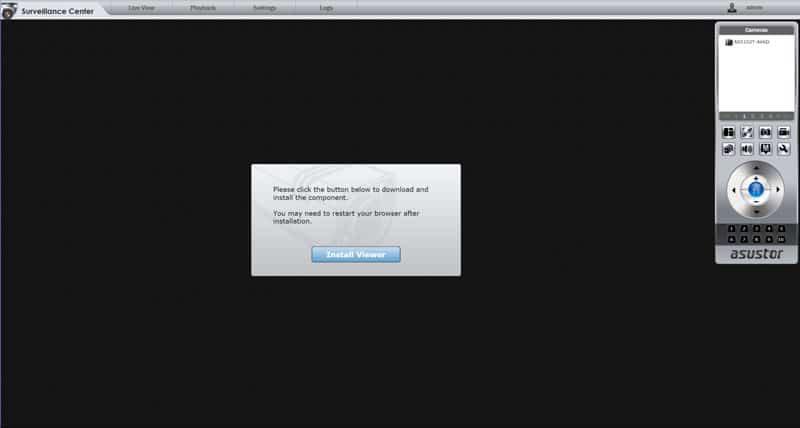
There is plenty more to discover in ASUSTOR’s ADM operating system, way too much to cover in a single NAS review. But I can tell you that it is one of the best NAS systems on the market, there is no doubt about that. It’s packed with features and everything was real easy to both find and configure.
ADM 2.4 Software Update
ASUSTOR released the newest version of the ADM, version 2.4, while I was writing this review, so I also wanted to cover what’s new. One of the major improvements is the shared folder encryption mechanism. The new method effectively increases data encryption speeds and properly releases storage space when deleting files within.
Solid state drives become cheaper every day and 1TB drives are at a price where people start to consider them for a their NAS system. To support this, ASUSTOR added support for TRIM so the SSDs in your NAS can maintain stable read and write performance while controlling the frequency of overwriting to specific blocks and thereby extending the life of the SSDs.
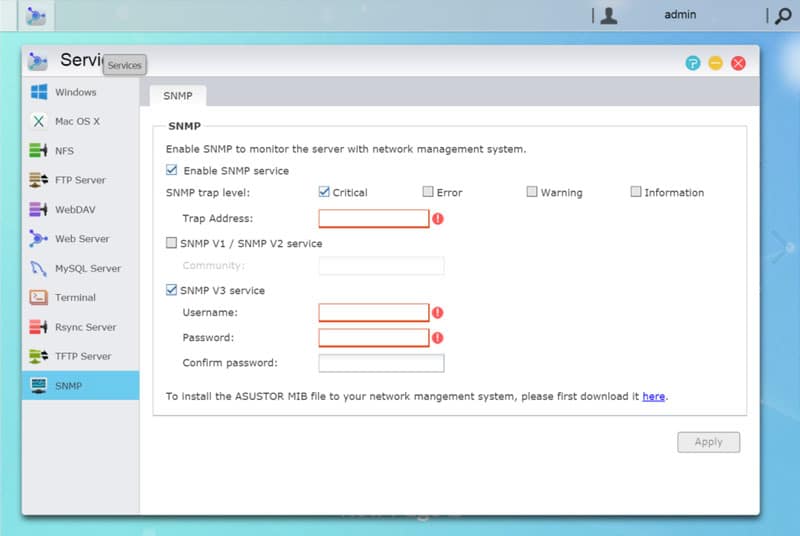
The SNMP Network Management Protocol was also added. It provides a set of standards that allow managers on a single network management system to collect information from all network equipment in his network. ADM 2.4.0 supports SNMP v1, v2c, and v3 and also provides a trap notification setting for significant events.
Improvements on the ADM Network Defender includes the trusted, black, and white lists that we saw earlier. You can now also define rules by origin or area via the Geo IP expansion module.



















